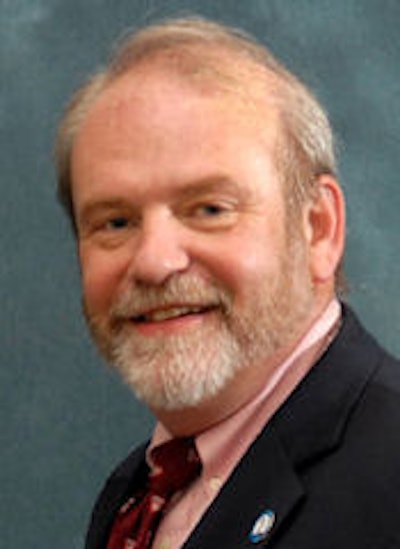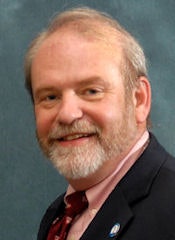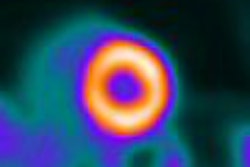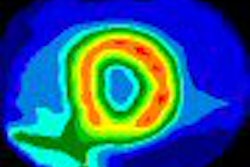
Last week's announcement by Atomic Energy of Canada (AECL) to discontinue the development of two new nuclear reactors for producing medical isotopes has the nuclear medicine community scrambling to develop alternative sources. One option is creating a source for medical isotope production within the U.S., according to the president of the SNM.
AECL announced on May 16 that it was halting development of the Maple reactors at its Chalk River Laboratories facility in Ontario. The nuclear medicine community had been hoping that the Maple reactors would provide a more reliable source for medical isotopes than AECL's National Research Universal (NRU) reactor, which began operation in 1957. The NRU reactor has been plagued by shutdowns that have interrupted the supply of key medical isotopes such as molybdenum-99, the precursor to technetium-99m, which is widely used for nuclear cardiac imaging.
While the AECL's decision is "terrifically disappointing," in the words of SNM president-elect Dr. Robert Atcher, the action has invigorated efforts by the Reston, VA-based organization to secure other isotope sources outside of the U.S., and to explore the feasibility of U.S. production of medical isotopes.
The latter objective is a much more daunting task, since currently no U.S. facilities are immediately ready to manufacture medical isotopes, such as molybdenum-99, and there are no plans to build such operations.
"For all intents and purposes, there is nothing, which is a sad state of affairs," Atcher said. "Most of the places that have an operating reactor do not have the processing capability in the form of hot cells and a staff that would work 24/7 toward that activity. There are some facilities that have the hot cell capability, but don't have the manpower or the reactor nearby."
Looking for answers

To find a potential remedy, Atcher, who also serves as program manager for U.S. Department of Health and Human Services programs with Los Alamos National Laboratory in New Mexico, said that SNM is "leading an effort to examine what capabilities do exist, in any way, shape, or form at any stage of development."
The initiative's roots date to last November, when the AECL took the NRU reactor out of service for technical problems, causing a shortage of medical isotopes, the latest in a series of supply shortfalls in recent years. NRU and the Chalk River facility supplies more than two-thirds of the world's radioisotopes, many of which are provided to Canadian healthcare company MDS and its radioisotope developer MDS Nordion of Kanata, Ontario, which alone is responsible for about 50% of the world supply. The Chalk River reactor went back online in January, restoring supply levels.
Among the possible suppliers approached by SNM was the University of Missouri, which has a research program funded by the U.S. Department of Energy's National Nuclear Security Administration to investigate the production of low-enriched uranium to produce molybdenum-99. While some very preliminary exploration has been done, the program is "nowhere near the scale that would be required to do a commercial 24/7 level of production," Atcher said.
SNM also has been in contact with General Atomics of San Diego, which has several facilities around the world, including two recently commissioned nuclear reactors in Indonesia and Morocco. General Atomics estimated that it would cost approximately $120 million to build a facility to manufacture medical isotopes. Additional expenses would be incurred for regulatory approval, operating costs, and other related factors.
Status report
SNM is looking to complete a status report on the medical isotope situation by next month's annual meeting in New Orleans. The report likely will not contain any solutions, Atcher noted, but it will provide an update on talks with potential medical isotope sources with the physical and intellectual resources to develop production capabilities, where those facilities are located, and estimates on production costs.
"This announcement will probably put some pressure on the society to make a recommendation about what we should be doing" in the future, Atcher said, but those specific discussions have not yet begun.
To his knowledge, Atcher said SNM has had no direct talks with AECL or MDS Nordion about the current status of medical isotope supply.
"Most of the [U.S.] supply issues in the short term will be met by foreign sources, whether it be reactors in Belgium, the Netherlands, South Africa, Australia, or some other facilities that have the excess capacity to provide the material for us," he said. "That's the next step in our timetable and what we need to do in terms of figuring out who is making the material, and who is prequalified by the FDA, and for getting some idea from the other folks what it would take to get them prequalified" to manufacture and distribute medical isotopes.
Increasing utilization
With other countries' increased utilization of nuclear medicine imaging, Atcher said there is bound to be an impact eventually on the worldwide supply of molybdenum-99.
"With the exception of two reactors that General Atomics built in the last two years, there isn't much new capacity being brought online," he added. "From my standpoint, there is a sense intuitively that we have more pressure in terms of molybdenum-99 supply compared to five or 10 years ago, when there was enough excess capacity. If you went down for a while, there was enough capacity in some other sites to make up that difference."
U.S. production of medical isotopes undoubtedly will generate much discussion and debate at SNM's annual meeting next month. SNM leadership is scheduled to meet the week prior to opening sessions on June 15 to address the issue and the status report on the possible development of a U.S. source.
By Wayne Forrest
AuntMinnie.com staff writer
May 22, 2008
Related Reading
Canadian government to stop development of Maple reactors, May 16, 2008
New York hedge fund attempts to split MDS, April 11, 2008
Reactor shutdown hurts MDS Nordion's Q1, March 6, 2008
MDS expects less impact from reactor shutdown, December 17, 2007
MDS Nordion divests two product lines, November 30, 2007
Copyright © 2008 AuntMinnie.com




















